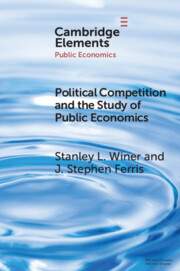Element contents
Political Competition and the Study of Public Economics
Published online by Cambridge University Press: 07 September 2022
Summary
Keywords
- Type
- Element
- Information
- Series: Elements in Public EconomicsOnline ISBN: 9781009006149Publisher: Cambridge University PressPrint publication: 06 October 2022
References
- 3
- Cited by



